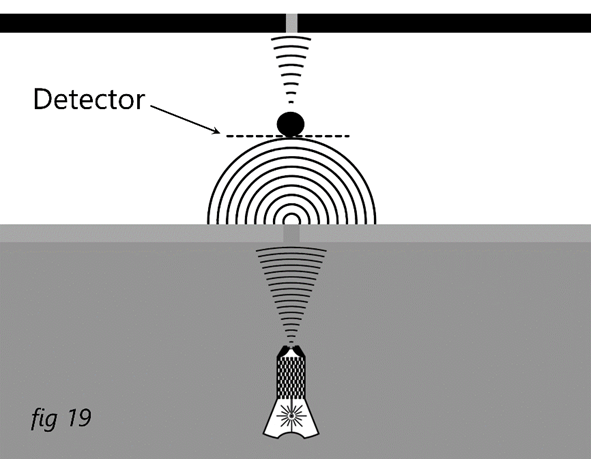Quantum Mind Control: The quantum mysteries of the double-slit experiment explained, and why light changes from a wave to a particle when observed
Quantum Mind Control, by Laurence Jackson, is a fascinating explanation and visualisation of the wave/particle duality of light, written as an easy-to-read popular science book for the general public and learned academics alike. Among other topics, it uses the double-slit experiment, which ironically can seem incomprehensible to many, as one of the platforms used to show how light acts as a quantum element and travels as a wave yet gets realised as a particle.
A short video posted by Jim Al-Khalili from The Royal Institution on YouTube in 2013 demonstrates why the double-slit experiment is so perplexing.
Quantum Mind Control explains how the double-slit experiment works and shows:
- Why light waves transform into particles when observed.
- What seed waves are.
- How seed waves create quantum entangled diffracted waves.
- The balance of wave symmetry within interference patterns.
- How probability waves work.
How light transforms from a wave into a particle when observed.
When individual electrons are fired through a single slit and an electron detector is used.
The following image (fig 19), illustrates electrons passing through a single slit with a width comparable to its wavelength. The electrons travel from the gun to the slit as waves which become diffracted waves after they pass through the slit. An electron detector detects these diffracted waves, which are realised as particles. The particles then continue their journey towards the back-screen as waves, but the new waves are no longer diffracted as they haven’t passed through a slit that is comparable to their wavelength.
This shows light transforms from a wave to a particle when observed, but only while the light interacts with the environment, which is an electron detector. The light leaving the detector once again travels as waves because this is the only way light can travel.

The double slit experiment.
In the double-slit experiment (fig 20), the electrons travel from the gun to the slits as waves which allows a single electron to enter both slits simultaneously. Each seed wave generates pairs of diffracted waves formed simultaneously and are consequently identical, creating a symmetrical interference pattern.
The states of the pairs of diffracted waves are correlated or quantumly entangled, meaning they remain aware and connected to their twin regardless of distance. However, quantum entanglement ceases if one of the twins comes into contact or is influenced by environmental factors. If this happens, they decohere and transition from being explained by quantum mechanics to being explained by classical mechanics. The correlation between the waves was broken in these experiments because the electron detector was the environmental factor that influenced and decohered the entangled waves coming from the left-hand slit. When diffracted waves from the left-hand slit get detected, they transform into particles and then continue their journey as waves, but the waves are no longer diffracted and cease to interact or create interference patterns with the waves from the right-hand slit.

Lights’ duality is shown with a prism.
Yet it’s not just the double-slit experiment that shows when light acts as either a wave or a particle. Lights’ wave/particle duality can be explained using a prism, where light bends as it passes from one medium to another, with the amount of refraction occurring being dependent on the wavelength of the light. This behaviour is consistent with the wave nature of light, as waves of different wavelengths bend at different angles. Light entering the prism travels as waves, and to capture the rainbow of colour that exits the prism, we need to detect the light waves. Detecting the rainbow of light waves is achieved by using a piece of paper that forces the waves to interact with the environment, where they briefly become particles and are realised as pinpoints of localised light on the paper.
https://www.quantummindcontrol.com/
Media Contact
Company Name: QuantumMindControl
Contact Person: Simon Bennett
Email: Send Email
City: Kidderminster
State: Worcestershire
Country: United Kingdom
Website: https://www.quantummindcontrol.com/


